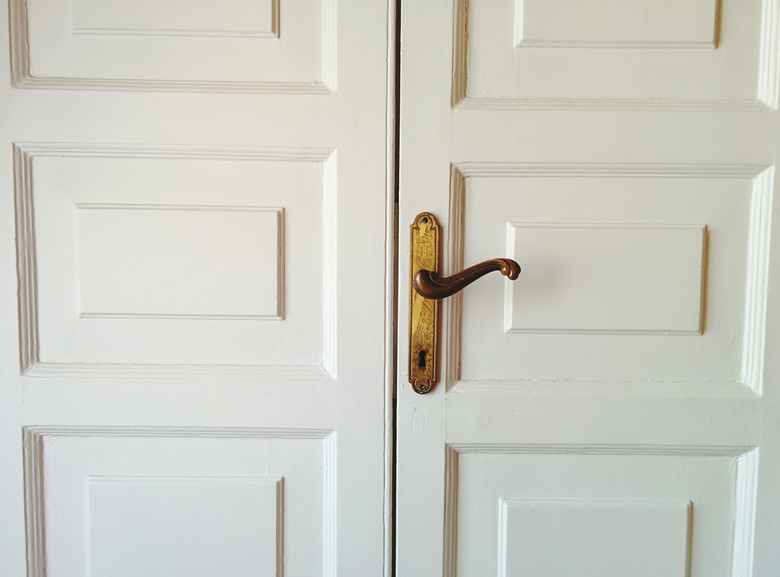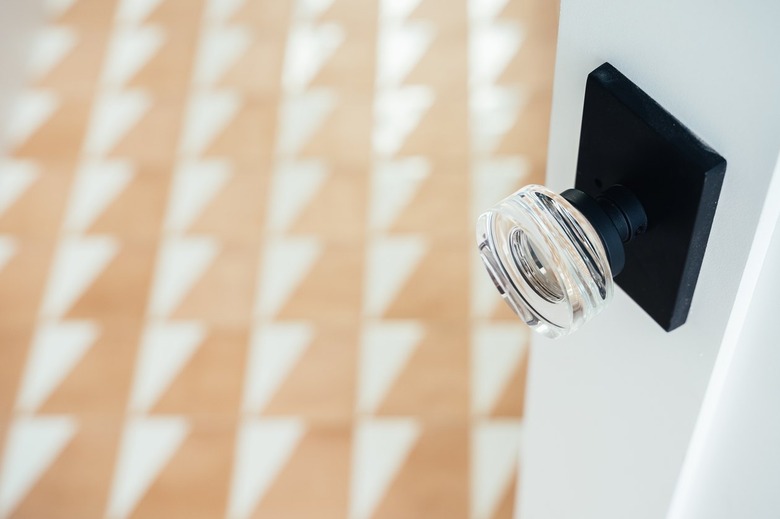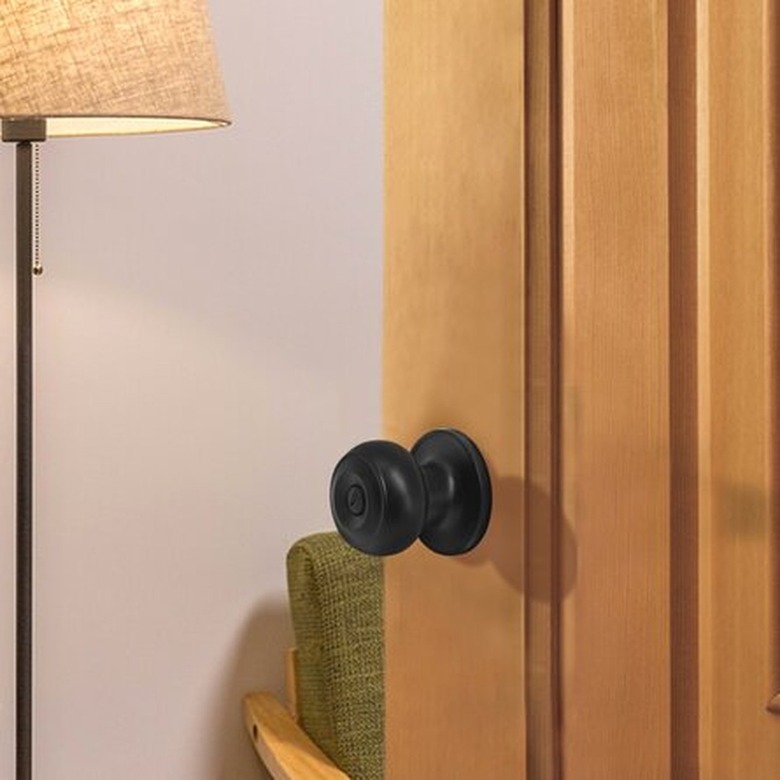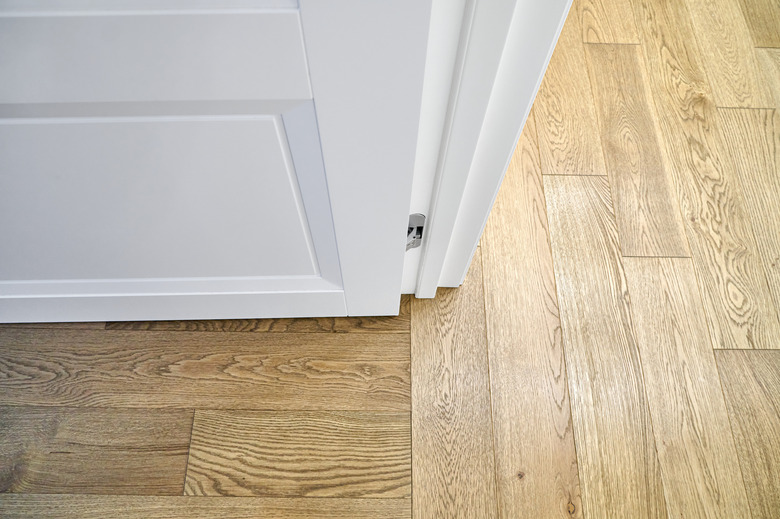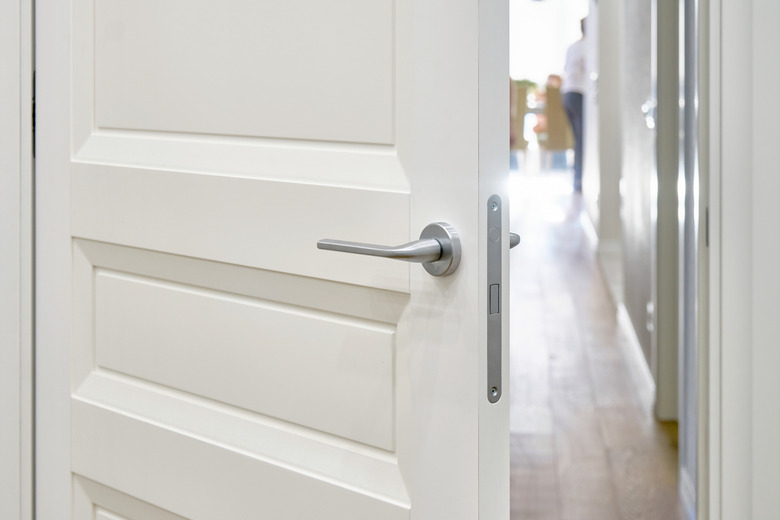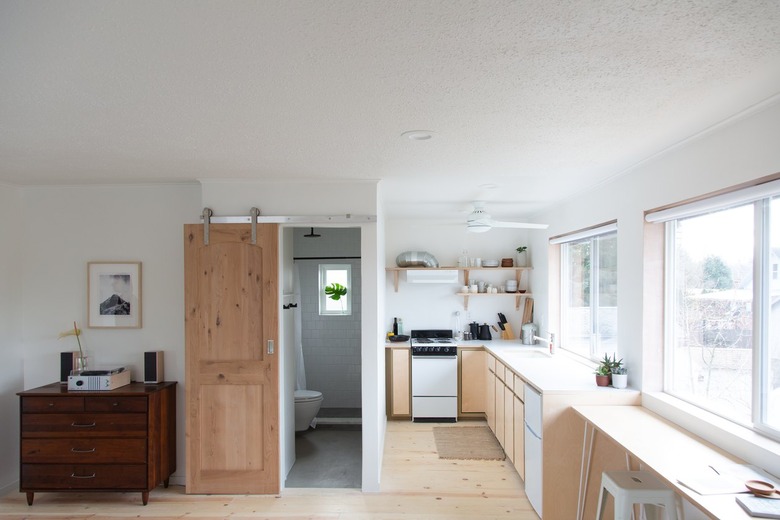How To Choose Interior Door Hardware
We may receive a commission on purchases made from links.
Door hardware is a must when you're installing a new interior door, whether it's pre-hung or a slab. Slab doors need hinges, a doorknob, and supplementary door hardware — not to mention holes and mortises (or the pocket where the lock goes). Typically, pre-hung doors have preinstalled hinges and predrilled holes and require only knobs, plus optional latches or locks.
Interior door hardware is different from the hardware you install on an entry door for a couple of reasons. One is that interior doors have hollow cores and are thinner and lighter than entry doors. Another reason is that you typically don't need a keyed lock on an interior door — although you might want one to limit access to a particular room or closet. Some interior doors slide rather than swing, and they don't need hinges at all, although they do call for special hardware.
Ready to spruce up an existing door or add hardware to a brand new one? Here's what you need to know.
Measuring for a Doorknob Replacement
Measuring for a Doorknob Replacement
When you're replacing door handles on existing doors or installing one on a new pre-hung door with predrilled holes, you need three measurements to ensure you purchase one that fits:
- The diameter of the cross bore, which is the large hole into which the lock set fits
- The backset, which is the distance between the center of the cross bore and the edge of the door
- The thickness of the door. There are two standard door thicknesses: 1 3/8 and 1 3/4 inches.
Interior hollow-core doors are usually 1 3/8 inches, but solid-core ones are often 1 3/4 inches, so if you have one of these, check the packaging to make sure the knob of your choice will fit.
The diameter of the cross bore will likely be the in line with the industry standard, 2 1/8 inches. But double check this measurement if you're replacing the doorknob on a vintage door that may not be standard. If it's bigger, no standard knob will fit, and you'll have to search for one that will. If it's smaller, you may be able to widen it, but that depends on the backset.
There are two standard backsets on North American doors: 2 3/8 and 2 3/4 inches. You'll most likely find the shorter version on interior doors. Some locksets are adjustable and will fit both backsets, but some aren't, so check the packaging before you buy to make sure the knob works with the backset you measure. Some vintage doorknobs have 5-inch backsets, and rather than trying to replace a malfunctioning one with a standard knob, it's usually better to purchase a new latch with the required backset and either reuse the knob or look for a replacement at an antique shop.
Right and Left Door Handing
Right and Left Door Handing
The direction in which the door swings is known as handing. Some non-turning handles and decorative handles with curves are designed to work in one direction only. You'll see a label specifying LH or RH on the packaging of door hardware that is designed for only one direction.
To determine if your door is right-handed or left-handed:
- Stand and look at the door from the outside. If the door swings from a hallway into a room, the hallway is considered outside and the room inside. If the door divides two rooms of equal size and importance, consider the inside to be on the side that the door swings and the outside to be the other side.
- Note which side of the door is the hinge side. If it's on the left, it's a left-handed door, and if the hinges are on the right side, it's a right-handed door.
Door Hardware: Choosing Door Handles
Door Hardware: Choosing Door Handles
Some door handles turn, some lock, and some remain stationary. The type you choose depends on where the door is located in the house and the amount of security you want it to provide.
- A passage doorknob turns but doesn't lock. This is the type of door handle you typically install on hallway or closet doors.
- A privacy doorknob turns and locks from the inside. It typically has a push button or turn button. This is the type of knob you need for bedroom or bathroom doors. Most have a lock-release mechanism you can activate from outside using a paper clip or the pin supplied with the lockset.
- A storeroom doorknob, which is similar to a keyed entry door lockset you might install on the front door, can be locked from the outside with a key, and it has a push or turn button that can lock the door from inside. You can also choose a keyless lock with a keypad that allows you to enter a security code. You might want this kind of knob on a door for which you need extra security. Be sure to choose one designed for interior doors, which are thinner than exterior doors.
- A dummy doorknob doesn't turn and simply gives you something to grab when you want to open the door. It can often be mounted on the surface of the door — no cross bore required — and may be all you need on a closet door.
Knobs vs. Levers
Doorknobs have been around a lot longer than door levers, so they're a great choice if you're going for a vintage look. They aren't as easy to operate as door levers, which makes them ideal if you want to childproof part of your house.
Easy to operate and ADA-approved, levers are the better hardware choice in homes with elderly or people with mobility issues who may have a hard time gripping a knob. Levers also allow you to open the door with your elbow when your hands are full because levers extend away from the door jamb. This also means you won't rub your knuckles against the jamb when you open the door, but it's more likely to get caught on loose clothing.
Available Finishes and Materials
Door handle material and finish are largely a matter of personal choice, and if you're particular about these, you should compare products from different manufacturers. A polished brass or satin nickel doorknob from one manufacturer may look much different than one made by another manufacturer. That's especially true when you compare high-quality handles and budget versions.
Not counting decorative cut-glass knobs, the most common materials for interior doorknobs and levers are brass, bronze, and stainless steel. These are available in bright and matte finishes, with brushed brass, brushed bronze, and matte black also being common. Unprotected metal tends to dull over time, so choose a handle with a lacquer coating if you want it to stand the test of time.
Door Hardware: Choosing Door Hinges
Door Hardware: Choosing Door Hinges
When it comes to door hinges, you'll have less of a selection to choose from. But there are a few different options.
The most common door hinges are butt hinges, which are inset into mortises in the edge of the door and the jamb. They usually have removable pins and come in the same material and finish options as doorknobs. Two variations of the basic hinge design are ball-bearing hinges, which improve door operation and eliminate squeaking, and spring-loaded hinges, which gently close the door after you pass through.
Unlike exterior door hinges, which are 4 inches wide, interior door hinges are 3 1/2 inches wide. While you might need three of them to support a heavy entry door, you usually need only two for a hollow-core interior door.
Interior door hinges come with square corners or rounded ones. Choose rounded ones if you use a router to cut the mortises. If you're replacing existing hinges, your best bet is to choose the same style.
Locks and Latches for Interior Doors
Locks and Latches for Interior Doors
It's rare to need more security than that offered by a privacy or storeroom doorknob on an interior door, but if you do need it, you can always install a deadbolt provided you choose one that is adaptable to fit a 1 3/8-inch door. This one-sided deadbolt from Schlage features a turn button on the inside of the door and a plate on the outside so it can only be operated from the inside.
Other security options include drop-down latches, side-bolt latches, and chain latches. For a rustic look, consider an old-fashioned eye-hook latch.
Hardware for Sliding Doors
Hardware for Sliding Doors
Because a pocket door disappears inside the wall when it's in use, you can't mount a doorknob onto it. Instead, you can use a pocket door pull. These hardware pieces are inset into a notch cut in the edge of the door, with the pull extending from the door edge when you push the top of it with your finger. The pull includes indentations on both sides that you can also use as handles.
If you're considering installing a sliding barn door, you'll need a track and rollers to mount it and an equally rustic handle. Because the door slides against a wall when it's open, the handle on the inside has to be mortised into the door, while the one on the outside can extend beyond the door face. These two handles usually come as a set.
